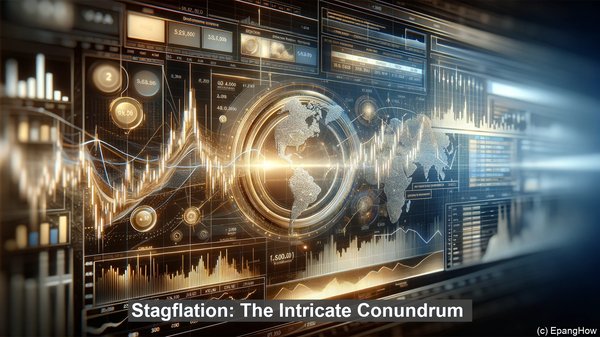Introduction: The Economic Landscape
Hello everyone, and welcome to this article on stagflation and inflation. In the world of economics, understanding these concepts is crucial, as they directly impact various aspects of our lives, from job markets to consumer prices. Today, we’ll embark on a journey to demystify the differences between stagflation and inflation, unraveling their complexities along the way.
Defining Inflation: A Primer
To begin, let’s establish a foundation by defining inflation. In simple terms, inflation refers to the general increase in prices of goods and services over time. It erodes the purchasing power of money, meaning that a dollar today may not buy the same amount of goods it could in the past. Central banks often aim for a modest, controlled level of inflation, as it can stimulate economic growth and prevent deflationary spirals.
The Causes of Inflation: A Multifaceted Phenomenon
Inflation can arise from various sources. One common cause is demand-pull inflation, which occurs when consumer demand outpaces the supply of goods and services. This can be due to factors like increased consumer spending or government policies that boost aggregate demand. Another type is cost-push inflation, where rising production costs, such as wages or raw materials, lead to higher prices. Additionally, inflation can be influenced by external factors like changes in global oil prices or exchange rates.
Inflation’s Effects: Winners and Losers
While inflation affects everyone, its impact can be uneven. Borrowers, for instance, may benefit from inflation, as the value of their debts decreases over time. On the other hand, savers and fixed-income earners may find their purchasing power diminished. Inflation can also introduce uncertainty, making long-term planning challenging. For businesses, it can alter production costs and pricing strategies, necessitating adaptability.
Stagflation: The Intricate Conundrum
Now, let’s turn our attention to stagflation. Unlike inflation, which is often associated with economic growth, stagflation presents a unique challenge. It refers to a scenario where inflation coexists with stagnant economic growth and high unemployment. This combination is considered atypical, as inflation and unemployment are traditionally viewed as inversely related. Stagflation can be particularly vexing for policymakers, as the usual tools to combat inflation, such as tightening monetary policy, may exacerbate the economic stagnation.
The Origins of Stagflation: Unraveling the Puzzle
Stagflation’s origins can be traced to a variety of factors. One key driver is supply-side shocks, which disrupt the production capacity of an economy. For example, a sudden increase in oil prices can significantly impact industries reliant on petroleum, leading to both higher costs and reduced output. Additionally, structural issues, such as labor market rigidities or inefficient regulations, can contribute to the persistence of stagflation.

Navigating Stagflation: Policy Dilemmas
Addressing stagflation requires a delicate balancing act. Traditional measures to combat inflation, like raising interest rates, may further dampen economic activity. Similarly, fiscal policies, such as reducing government spending, can have adverse effects. Policymakers often grapple with the need to simultaneously address both inflationary pressures and unemployment. This necessitates innovative approaches and a nuanced understanding of the underlying dynamics.

